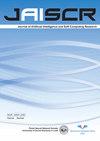Emerging Modularity During the Evolution of Neural Networks
IF 2.4
3区 计算机科学
Q2 COMPUTER SCIENCE, ARTIFICIAL INTELLIGENCE
Journal of Artificial Intelligence and Soft Computing Research
Pub Date : 2023-03-01
DOI:10.2478/jaiscr-2023-0010
引用次数: 0
Abstract
Abstract Modularity is a feature of most small, medium and large–scale living organisms that has evolved over many years of evolution. A lot of artificial systems are also modular, however, in this case, the modularity is the most frequently a consequence of a handmade design process. Modular systems that emerge automatically, as a result of a learning process, are very rare. What is more, we do not know mechanisms which result in modularity. The main goal of the paper is to continue the work of other researchers on the origins of modularity, which is a form of optimal organization of matter, and the mechanisms that led to the spontaneous formation of modular living forms in the process of evolution in response to limited resources and environmental variability. The paper focuses on artificial neural networks and proposes a number of mechanisms operating at the genetic level, both those borrowed from the natural world and those designed by hand, the use of which may lead to network modularity and hopefully to an increase in their effectiveness. In addition, the influence of external factors on the shape of the networks, such as the variability of tasks and the conditions in which these tasks are performed, is also analyzed. The analysis is performed using the Hill Climb Assembler Encoding constructive neuro-evolutionary algorithm. The algorithm was extended with various module-oriented mechanisms and tested under various conditions. The aim of the tests was to investigate how individual mechanisms involved in the evolutionary process and factors external to this process affect modularity and efficiency of neural networks.神经网络演化过程中的新兴模块化
模块化是大多数小、中、大型生物经过多年进化而形成的特征。许多人工系统也是模块化的,然而,在这种情况下,模块化通常是手工设计过程的结果。在学习过程中自动出现的模块化系统是非常罕见的。更重要的是,我们不知道导致模块化的机制。本文的主要目标是继续其他研究人员关于模块化起源的工作,模块化是一种物质的最佳组织形式,以及在有限资源和环境变化的进化过程中导致自发形成模块化生命形式的机制。本文着重于人工神经网络,并提出了一些在遗传水平上运行的机制,这些机制既有从自然界借来的,也有手工设计的,这些机制的使用可能会导致网络模块化,并有望提高其有效性。此外,还分析了外部因素对网络形状的影响,例如任务的可变性和执行这些任务的条件。分析是使用爬山汇编编码建设性神经进化算法进行的。将该算法扩展到各种面向模块的机制,并在各种条件下进行了测试。测试的目的是研究进化过程中涉及的个体机制和该过程外部因素如何影响神经网络的模块化和效率。
本文章由计算机程序翻译,如有差异,请以英文原文为准。
求助全文
约1分钟内获得全文
求助全文
来源期刊

Journal of Artificial Intelligence and Soft Computing Research
COMPUTER SCIENCE, ARTIFICIAL INTELLIGENCE-
CiteScore
7.00
自引率
25.00%
发文量
10
审稿时长
24 weeks
期刊介绍:
Journal of Artificial Intelligence and Soft Computing Research (available also at Sciendo (De Gruyter)) is a dynamically developing international journal focused on the latest scientific results and methods constituting traditional artificial intelligence methods and soft computing techniques. Our goal is to bring together scientists representing both approaches and various research communities.
 求助内容:
求助内容: 应助结果提醒方式:
应助结果提醒方式:


